
The Application Notebook
The analysis of Bisphenol A using UCT Enviro-Clean® C18 cartridges and UCT Selectra® Phenyl columns using LC–MS-MS is discussed.

The Application Notebook
The analysis of Bisphenol A using UCT Enviro-Clean® C18 cartridges and UCT Selectra® Phenyl columns using LC–MS-MS is discussed.
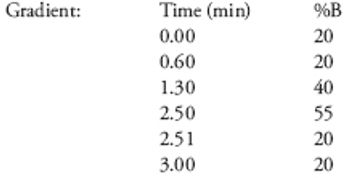
The Application Notebook
This application note describes a rapid UHPLC method for the separation of Sulforhodamine 101 (Texas Red®) and its three water-soluble derivatives using a column packed with Thermo Scientific Hypersil GOLD™ 1.9 μm particles.

The Application Notebook
A critical part of research and quality control analysis of proteins involves verifying the primary and secondary structure of a protein.
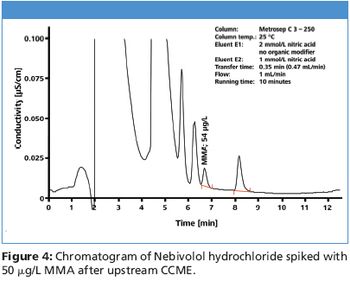
The Application Notebook
The analytical challenge treated in the present work consists in determining sub-ppb concentrations of low-molecular-weight amines in the presence of strongly retained cationic drugs by using ion chromatography (IC) with upstream inline coupled-column matrix elimination (CCME).

The Application Notebook
Oils for foods and cooking are derived from oilseeds like canola, soybeans, corn, flax, and cotton.
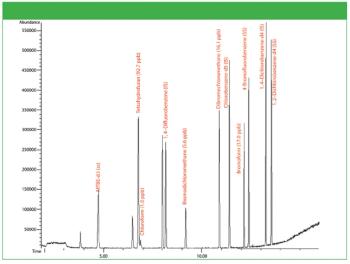
The Application Notebook
The U.S. EPA Office of Groundwater and Drinking Water released Method 524.3, "Measurement of Purgeable Organic Compounds in Water by Capillary Column Gas Chromatography/Mass Spectrometry, Version 1.0," in the Federal Register on August 3rd, 2009 (1, 2).
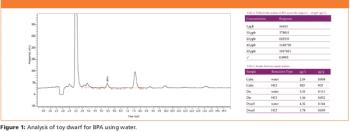
The Application Notebook
BPA or bisphenol A has become well know over the past year as concerns for its effect on human health and well being have been raised. The concerns over BPA in plastics began with baby bottles and spread to include other types of bottles and toys.

The Application Notebook
Dedicated instrumentation, multiple columns and time-consuming changeovers are required in order to measure both anions and cations with ion chromatography.

The Application Notebook
In a market as dynamic and fast-paced as ours, it should come as no surprise that in the months since I last addressed our readers in this space, a great deal has taken place in the world at large and in the field of separation science in particular.
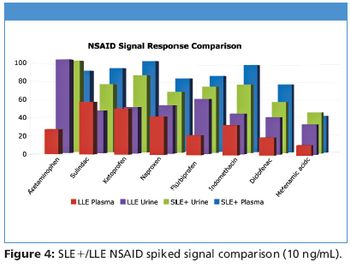
The Application Notebook
Traditional liquid-liquid extraction (LLE) can provide very clean extract. However, in many cases lower recoveries, labor-intensive liquid handling issues, and difficulty with automation can limit the success of LLE in sample preparation.
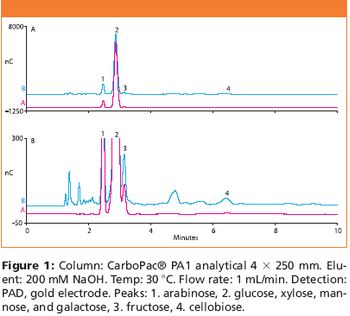
The Application Notebook
Corn stover is the above-ground portion of the plant minus the kernels and it accounts for a large percentage of the global supply of lignocelluosic biomass available as feedstock for fermentation systems used for biofuel production.

The Application Notebook
As global interest in alternate fuel sources increases, many laboratories are researching effective ways to test, develop, and produce fuel from renewable energy sources.
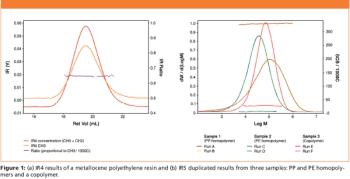
The Application Notebook
The analysis of the molar mass distribution of polyethylene and polypropylene resins by GPC/SEC has always been considered a demanding task because of the requirement of high temperature operation for dissolution and complex hardware design, which often results in high maintenance cost, in particular related to the autosampler/injector and detector units, and in other problematic and consuming tasks such as solvent handling added to column fragility, sample degradation, or detector sensitivity–stability.
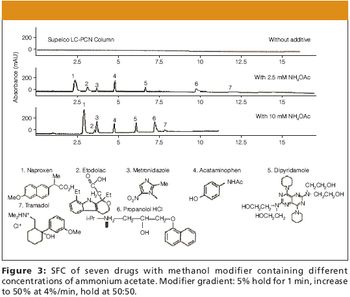
The Application Notebook
Supercritical fluid chromatography (SFC) has been practiced for approximately 50 years. SFC on packed columns for both qualitative and quantitative purposes underwent a renaissance in interest at the beginning of the 1990s when limitations of capillary SFC became obvious and important progress in composition gradient techniques for mixed mobile phases was achieved. Even with these instrumental improvements, wide acceptance of the technology was not forthcoming because the perception was that highly polar analytes were not soluble in carbon dioxide and thus were not separable. It is now apparent that the use of additives dramatically extends the range of solute polarity amenable to SFC.

The Application Notebook
The Epitomizeâ„¢ CSP-1C chiral stationary phase uses cellulose tris-(3,5-dimethylphenylcarbamate) as the chiral receptor and is offered in a variety of particle sizes including 1.7, 3, 5, 10, 20, 50, 100, and 300 microns.
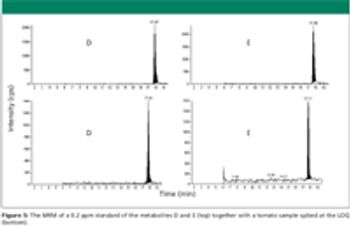
The Application Notebook
The high-throughput analysis of pesticides in raw agricultural commodities has been hindered by the slow and laborious sample preparation stages. Using traditional clean-up procedures, as many as 20 steps are required to get the sample in a convenient form for analysis, which typically limits sample throughput to eight samples per day. This study evaluates a new approach using a novel laboratory mill and pulverizer to extract various pesticide residues from different kinds of plant materials and to identify and quantitate the active ingredients by liquid chromatography–tandem mass spectrometry (LC–MS-MS). It shows that by automating the procedure, the number of clean-up steps can be reduced significantly, which increases sample throughput over traditional approaches.

The Application Notebook
Acidic mobile phases have found widespread applications in the reversed-phase HPLC separation of many important pharmaceutical and environmental compounds.

The Application Notebook
Pickering Laboratories specializes in the manufacturing of cation-exchange columns and eluants for amino acid analysis.
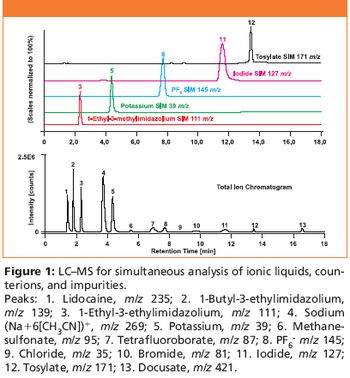
The Application Notebook
The term ionic liquid refers to organic salts with relatively low melting points (below 100 °C) that usually consist of an organic cation or anion and a counterion, in either organic or inorganic form.
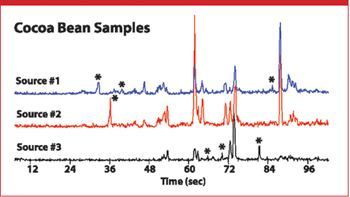
The Application Notebook
Solid phase microextraction (SPME) was used to generate volatile and semivolatile compound profiles of raw materials used in the production of chocolate products.

The Application Notebook
In many solution studies of lignin the need to invoke association and aggregation phenomena has become apparent.
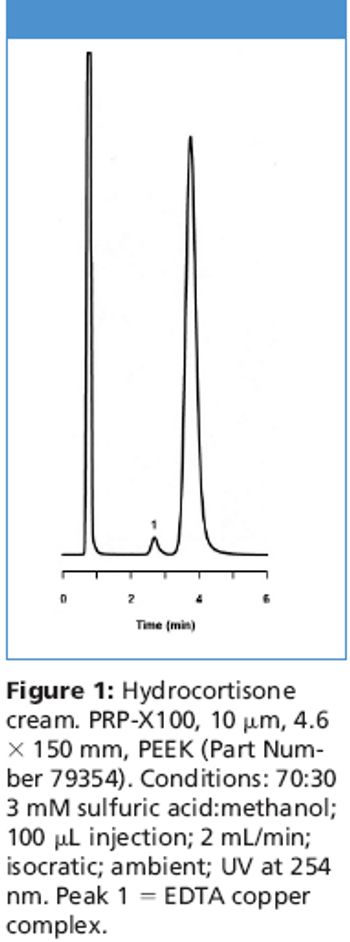
The Application Notebook
Hamilton Company is best known for manufacturing precision fluid measuring products, including syringes for HPLC and GC.
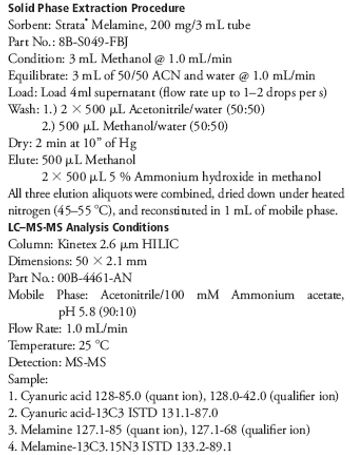
The Application Notebook
The presence of both melamine and cyanuric acid in concentrations greater than 2 μg/mL results in the crystallization of the two compounds, forming the toxic, water-insoluble melamine cyanurate complex.
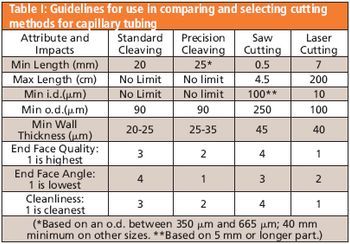
The Application Notebook
Various techniques exist for cutting capillary tubing. In this note we revisit these methods and provide guidelines for selecting the most appropriate method.

The Application Notebook
Due to their high toxicity and carcinogenicity, aflatoxins are of major concern for food producers, the food processing industry, and consumers.
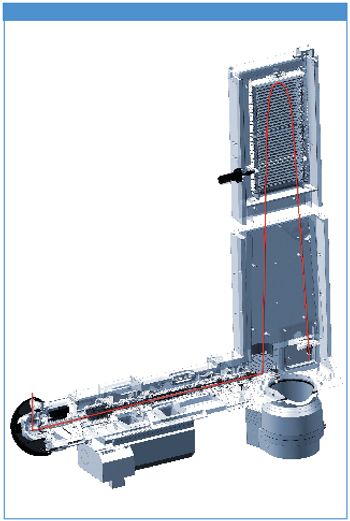
The Application Notebook
In the pharmaceutical industry the increased efficiency brought about by new fast chromatography methods needs to be matched by commensurate mass spec capabilities. maXis UHR-TOF is the instrument of choice to keep up with fastest chromatography.

The Application Notebook
Smokeless tobacco can contain thousands of analytes, making it an extremely difficult matrix for identification of pesticide residues.
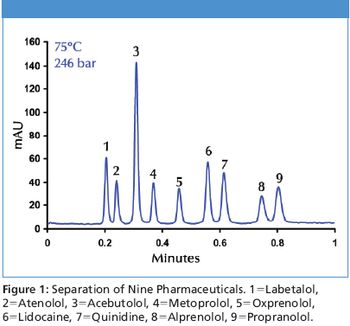
The Application Notebook
In this application note we examine the effect of temperature on a sub-2 µm zirconia-based phase for the analysis of nine common pharmaceuticals.

The Application Notebook
This study uses the challenging analysis of a complex, multi-organ peptide digest of Caenorhabditis elegans (C. elegans) to compare the performance of a novel linear ion trap mass spectrometer and a quadrupole time-of-flight (Q-TOF) mass spectrometer.
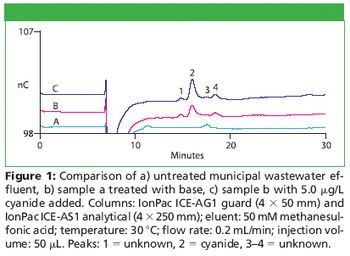
The Application Notebook
Cyanide, an environmental contaminant, can cause serious health effects including goiters, hypothyroidism, and some neuromuscular diseases.